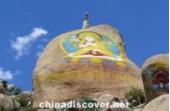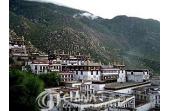Drepung Monastery
- Things to do
-
- Photo(13)
- Tips&article(8)
- Make it Happen
- Map
-
loading...
Top 5 Lists
Built in 1416, Drepung Monastery is the first of the three principle monasteries of the Gelugpa School of Buddhism. Gelugpa, or Yellow Hat, Buddhism is the branch followed by most Tibetans, and the most influential figure in this faith is the Dalai Lama. Drepung Monastery used to be the living quarters of Dalai Lamas before the reconstruction of the Potala Palace by the Fifth Dalai Lama between 1645 and 1694. Drepung was listed as a national cultural relic in 1982.
Drepung Monastery lies five kilometers west of Lhasa city under Mount Gambo Utse. Surrounded by the dark faces of mountains, its grand white buildings stand out shining in the sunlight. If taking bus 3, 301 or 3O2, you will have to walk a long way from the bus stop to the gate of the monastery. A 20 yuan taxi ride will bring you right to the gate.
The Fifth Dalai Lama enlarged Drepung and ruled there while the Potala was being built. This magnificent monastery was developed to an enormous scale, resembling a huge walled city. From its roofs, one can enjoy a scenic view of Lhasa City.
In this monastery, the most important activity is called Shai Dafo ('Sunning the Buddha'), which means to take the giant Buddha (actually a giant banner depicting Buddha called a Thangka) outside into the sunlight. The festival is held on the first day of the Shoton Festival, or the Yoghurt Festival, around early August every year. It is the busiest day around the monastery with crowded people and heavy traffic. When the sun rises, the huge Thangka is taken from the monastery and extended up the mountainside. Tibetans pray under the Thangka and circle it in a long queue. The best place to take a photo of Giant Living Buddha Thangka is from the opposite mountain.
According to religious records, during the foundation of Drepung, Tsongkhapa, the founder of Gelugpa Buddhism, discovered a magical white conch shell with counter clockwise swirls, believed to be buried by the Buddha Sakyamuni. Tsong Khapa bestowed this religious treasure to Drepung, and it can still be seen today in the Great Sutra Chanting Hall.
As the most powerful of the Gelugpa monasteries, Drepung had seven colleges and, at its height, housed over 10,000 monks. It owns many splendid murals, elaborate statues and other rich treasures. A giant golden statue of Buddha called Jiangba Tongzhenma sits near the precious conch shell.
It’s more convenient by Taxi than by bus, and the fee is about RMB 20 yuan.How to Get to there?
Tips & articles
|
|
|
forum discussion
|
|
|











